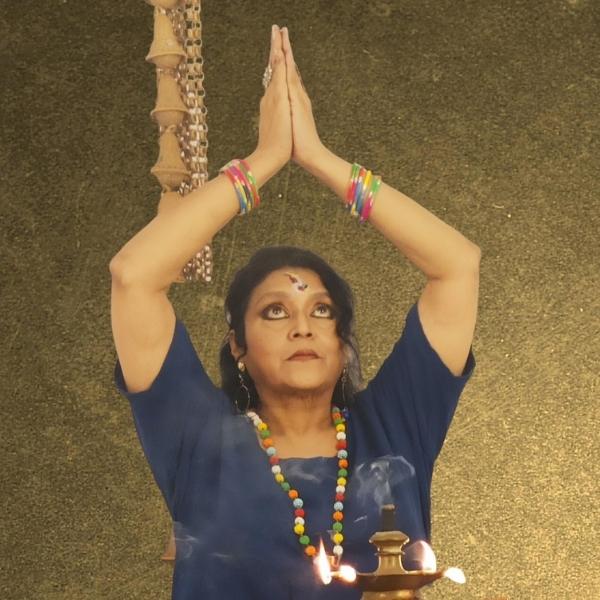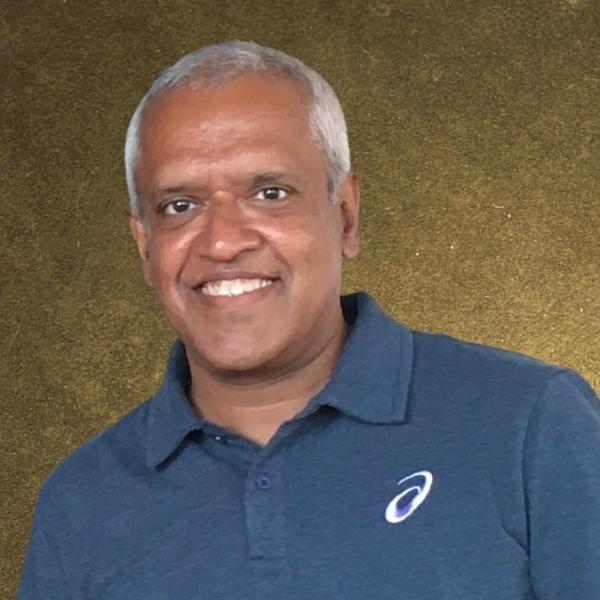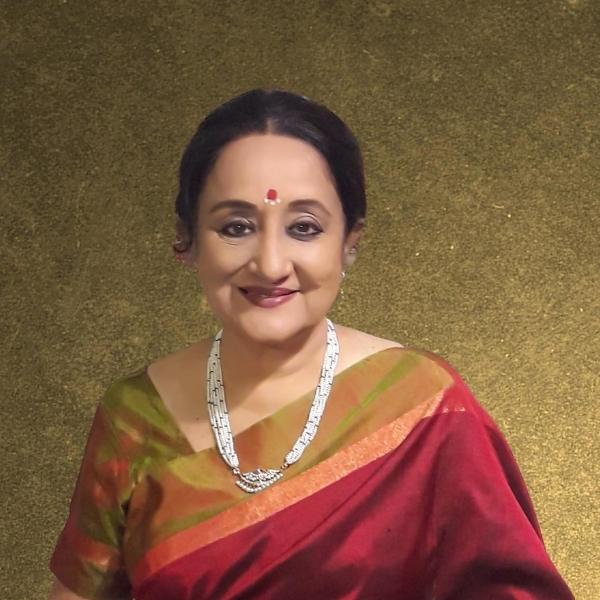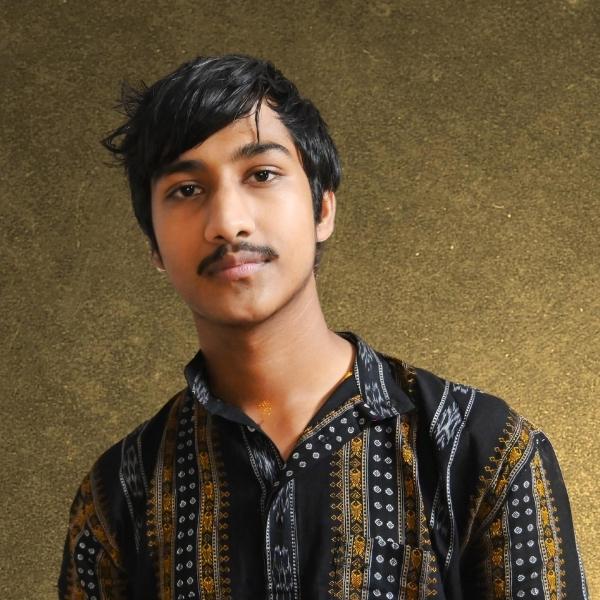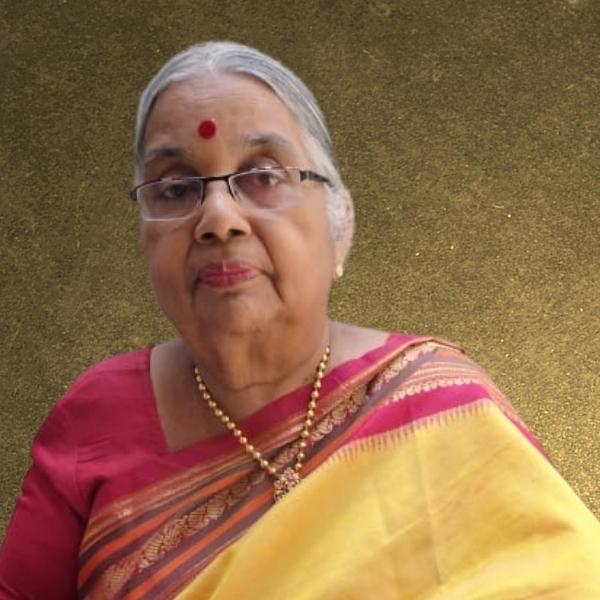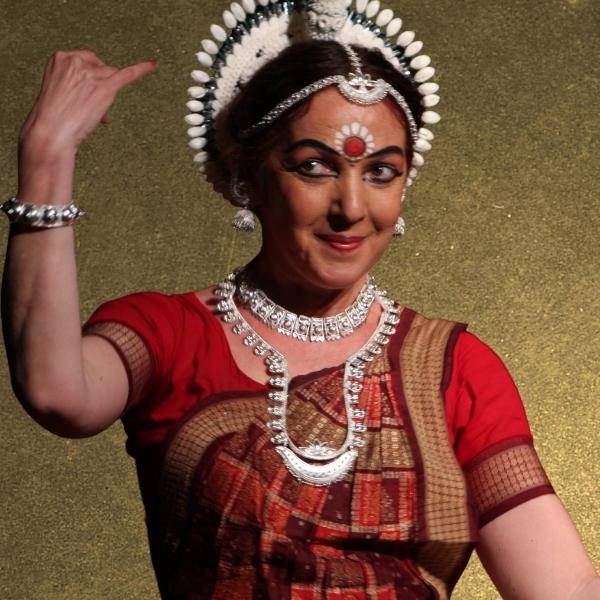
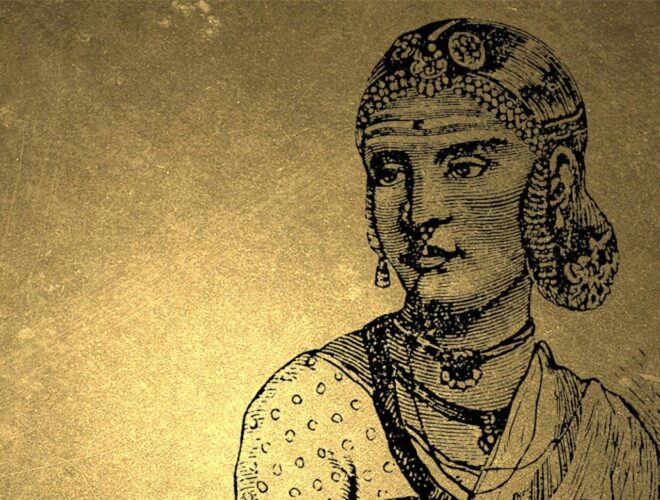
This event is over. See upcoming events
9:00 AM - 1:00 PM (UTC+5.5)
Retrospective on Devadasi Tradition
SPEAKERS
Categories:
Contact
The Devadasi tradition is a part of the distinct Hindu culture of temple worship and is an example of Hindu approach to art as a religious practice and the Hindu worldview of inseparability of aesthetics and spiritual practice. Devadasi is the name given to a woman ritually dedicated to the deity of a temple to play the role of an invocation of spiritual power through her dance as part of the worship rituals of the temple. As a part of this extremely dedicated spiritual life of the Devadasis, a distinct style of ekaahaaryaka i.e. a solo strand of Indian classical dance developed in different parts of India, particularly in South India.
Traditionally, this strand of Indian classical dance was the exclusive right and duty of women of a certain community which had hereditary rights and privileges. They were trained in the Shaastra and Prayoga i.e. theory and practice of dance, music and poetry along with Sanskrit, Prakrits and other regional Indian languages.
Some members of this group attained recognition for their skill in dance and music, as Raajanartakis or royal court dancers. Some members of this community entertained the learned and ordinary people alike through Shaastreeya prayoga of dance and music. At the same time some amongst them were also involved in offering sex services which was considered an acceptable profession in pre-colonial India.
Devadasis were venerated for their spiritual accomplishment of being non-sensualist throughout their life. This was part of the Deekshaa of a Devadasi and was mandated for the invocation of the spiritual power as per the temple traditions.
Today’s Bharatanatyam, Odissi, Andhra Natyam and Vilasini Natyam are proscenium stage adaptations of the art of Devadasi and Rajadasi. These are learnt and performed by people of all genders and of all communities who receive great acclaim.
Presently, surviving members of the Devadasi families are hardly seen performing their dances either in a temple or on the modern proscenium stage. These women and their girl-children are found to be deeply inhibited and reluctant to take up their family’s hereditary art. Though some of them were affluent, their social image and self-image has been damaged due to the new colonized worldview of British educated Indians. Many of them also became poor financially.
What led to this situation? Why did Hindu temples and their Devadasis lose each other’s privilege and support? At a gross level, it is the decline in the royal patronage to temples due to the weakening financial position of the local kings alongside greater control of the European, particularly the British rule over Indian society and its culture. At a more subtle level, Victorian morality of the British was also responsible for this. The same was imbibed by the colonized British educated Indian ‘reformation’ movements. These movements were supported by the reformation-masked condescending political attitude and strategy of the British. This resulted in a misunderstanding and misinterpretation of the Devadasi tradition as a kind of ‘prostitution’. Laws were introduced by the British colonial government banning Devadasi tradition in different parts of India with names such as anti-nautch, Devadasi Protection, Prevention of Dedication etc. This led to the extinction of the traditional temple-Devadasi connection and the right cum duty of the Devadasi community. It is this Victorian morality imbibed by the colonized British educated Indians that led to looking down at the Devadasi tradition and a consequent low self-image of them towards their own art and tradition.
What led to the modern adaptations in the form of Bharatnatyam, Odissi etc.? It was part of classical art revival for nationalists like E Krishna Iyer who vociferously argued against the colonial and reformist Indian misrepresentation of the Devadasi tradition. It was also a part of modernized adaptation to contemporary proscenium stage requirements for scholar-practitioners like Rukmini Devi Arundale. Meanwhile many traditional Indian performing arts have also been undergoing this new development of proscenium stage adapted form. Negating the transmission system of knowledge and skill traditions as hereditary right and duty of specific communities and arguing for knowledge and skill traditions to be the choice based was seen as a modern individual-liberty-based idea and this was applied to Devadasi traditions of dance and as such, taking the Devadasi dance out of community and gender restrictions was seen to be a progressive development just as it was seen as a progressive development for Kuchipudi dance tradition to move beyond Brahmin community and male gender. Particularly women of communities who were discouraged from dancing on stage viewed their participation in this tradition as their own ‘modern’ ‘educated’ liberation as women. People from non-Devadasi communities taking up this dance tradition viewed their own work as a protest against and the countering of stigmatization of the tradition by the British and the British educated Victorian morality bound ‘reformists’. Royal, aristocratic and other elite Indians who looked at the British women dancing in parties as their greater civilization, encouraged women members of their own families to learn and perform Indian classical dance from Kuchipudi male gurus, Rajanartaki and Devadasi female gurus and showcased it during special occasions as their elite culture.
Resistance to the misunderstanding and misinterpretation of the Devadasi tradition happened from within the community itself too, through scholarly and influential women like Bengaluru Nagaratnamma. In 1927, Nagarathnamma and other Devadasis established the Association of the Devadasis of Madras Presidency; she was elected its first president. She actively fought against the negative social and self-image of the Devadasis. An American dancer Esther Sherman moved to India in 1930, learnt Indian classical dances, changed her name to Ragini Devi, and joined the movement to save and revive ancient dance arts fighting against their misrepresentation.
Guru Nataraja Ramakrishna spent a great part of his life in researching the original tradition behind the modern forms like Bharatnatyam, by living with the Devadasis and learning the traditional nuances from them. It is in this process that he brought to light some of the surviving Devadasi women of the Telugu states, their shaastra and prayoga expertise and the region-distinct nuances of their performance technique.
Padma Bhushan Swapnasundari, an established Kuchipudi and Bharata Natyam exponent studied the Devadasi Bharatham independently by direct learning from surviving Devadasi artists. She explored its sacred dimensions and historical background, analysed and codified the Devadasi and Rajadasi dance techniques and placed the results in the public domain in demonstrations of Shastra-Sampradaya samanvayam . Famous Telugu modern poet, scholar and researcher Dr. Arudra published several articles on the Devadasi institution and its cultural and artistic heritage.
Dr Saskia Kersenboom, who was trained in Devadasi dance tradition and rituals by Devadasi Guru Smt. P Ranganayaki and learnt Bharata Natyam from different Gurus, came out with her seminal PhD dissertation (1984) “Nityasumangali: towards the semiosis of the Devadasi tradition of South India” in which she brought out the intricate and deep relationship between Agamic temple tradition and its deep philosophical ideas and the significance and essentiality of the Devadasi dance tradition and its spirit. Around the same period, Dr Frederique Marglin of US, who learnt Odissi and studied the Devadasi rituals of Puri’s Jagannatha temple, came out with her research work bringing out the traditional perspective about the Devadasi tradition of Orissa in her book “Wives of the God King: The Rituals of the Devadasis of Puri” (1985).
Guru Nataraja Ramakrishna used his research for projecting Andhra Natyam as a Telugu parallel to Bharatnatyam and Odissi. Padma Bhushan Swapnasundari, worked independently to obtain the same result through Vilasini Natyam. Further, by performing Temple ritual dances of Vilasini Natyam in Sri Ranganatha temple in Hyderabad for 28 years from 1990s she restored Devadasi dance to its original locus, i.e. the temple.
Meanwhile, some dancers who learnt Indian classical dance forms like Kuchipudi and Bharata Natyam are tracing their roots back to Devadasi families and are now working towards reviving the self-esteem of the hereditary community of Devadasis.
In 2022, Government of India awarded Padma Shri to Smt Muthukannammal, one of the very few surviving performers of Sathir, the Tamil name for the dance tradition of the Devadasis. She celebrated this occasion by dancing at the age of 85 at the Murugan temple at Viralimalai.
While this is the background, today, there are also attempts by people who have no respect for Hindu sacrality and for the system of hereditary skills, knowledge systems and performing art traditions. These persons consider as a right plus duty, to take up the cause of the Devadasis and claim Bharatnatyam, Odissi, Andhra Natyam, Vilasini Natyam etc., as the exclusive right of the Devadasi community. In the name of ‘progressive’ activity these movements are spearheaded by those who create conspiracy theories and hide behind the stated progressive stance.
While it is important and essential to restore the self-esteem and encourage participation of the members of Devadasi families in the revived forms of their dance heritage, it is equally important to retain the sacred aspects of the tradition which are vital for its survival.
With this objective, INDICA which is committed to preservation, protection and promotion of Indic traditions, is organizing a Retrospective Symposium on the Devadasi Tradition with invited talks by several eminent dance Gurus, researchers and authors who spent decades studying this tradition on Saturday, the 23rd of July, 2022 from 9:00 AM to 1:00 PM.
This symposium is dedicated to the venerable memory of Bengaluru Nagaratnamma.
::SCHEDULE::
| S.NO | Name | Title | Timings |
| 1 | Dr. Nagaraj Paturi | Welcome Address & Introduction | 9.00am to 9.10am |
| 2 | Padma Bhushan Swapnasundari | Inaugural Address: Devadasi in Text, Tradition and Beyond | 9.10am to 09.40am |
| 3 | Sri C K Sridhar | HEALING BROKEN SPACES: Perspectives on the Devadasi Tradition | 9.40am to 10.10am |
| 4 | Guru Lakshmi Viswanathan | An Artistic Legacy That Has Stood the Test of Time | 10.10am to 10.40am |
| 5 | Sri Prateek Pattanaik | Debadasi Tradition of Odisha: Jagannatha Temple and Beyond | 10.40am to 11.10am |
| 6 | Dr. Rama. Kausalya | Devadasi and Temple | 11.10am to 11.40am |
| 7 | Padma Sri Dr.Ileana Citaristi | Devadasi of the Jagannath Temple: Precursors of Odissi Music and Dance | 11.40am to 12.10pm |
| 8 | Dr. Nagaraj Paturi | Jogin and Other Non-classical Versions of Devadasi, Ideal and Real | 12.10pm to 12.40pm |
| 9 | Padma Bhushan Swapnasundari& Dr. Nagaraj Paturi | Conversation : Devadasi Tradition & Vilasini Natyam | 12.40pm to 1.10pm |

